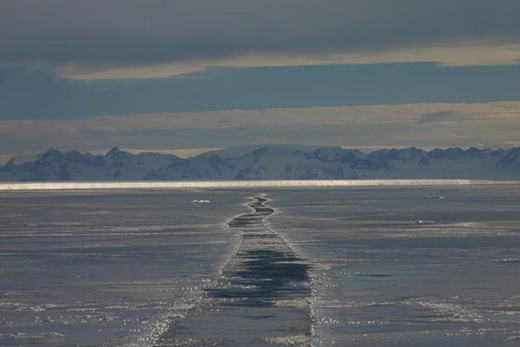The Making of Antarctica Outlined in New Research
Why Did Antarctica Suffer a Big Freeze?
The icebound, snowy wastes of Antarctica remain one of the most hostile environments for terrestrial animals, however our southernmost continent has not always been such a cold, inhospitable landmass. In the past, dinosaurs roamed its lush polar forests and even after the extinction of the non-avian dinosaurs, Antarctica continued to remain largely unfrozen for tens of millions of years into the Cenozoic.
The Freezing of Antarctica
That all changed around 34 million years ago, when global temperatures plunged an average of five degrees Celsius, permitting the Antarctic ice sheets, the glaciers we know today to form. The Antarctica big freeze has remained a mystery, but a team of scientists including researchers from McGill University (Montreal, Canada) may have worked out the answer.
The Antarctic Ice Sheets formed Around 34 Million Years Ago
Picture credit: Galen Halverson
Two Competing Theories
The new explanation for why Antarctica suffered a big freeze at the end of the Eocene Epoch, essentially combines two existing ideas. One of the big mysteries in the scientific world is how the ice sheets of Antarctica formed so rapidly about 34 million years ago, helping to mark the boundary between the Eocene and Oligocene Epochs.
The Two Theories
- The first explanation is based on global climate change. Scientists have shown that atmospheric carbon dioxide levels declined steadily since the beginning of the Cenozoic Era, 66 million years ago. Once CO2 dropped below a critical threshold, cooler global temperatures allowed the ice sheets of Antarctica to form.
- The second theory focuses on dramatic changes in the patterns of ocean circulation. The theory is that when the Drake Passage (which lies between the southern tip of South America and Antarctica) deepened dramatically about 35 million years ago, it triggered a complete reorganisation in ocean circulation. The argument is that the increased separation of the Antarctic land mass from South America led to the creation of the powerful Antarctic Circumpolar Current which acted as a kind of water barrier and effectively blocked the warmer, less salty waters from the North Atlantic and Central Pacific from moving southwards towards the Antarctic landmass leading to the isolation of the Antarctic region and lowered temperatures which allowed the ice sheets to form.
No one has thought to link these two competing explanations before.
Linking Two Explanations
A group of scientists, including researchers at McGill University’s Dept. of Earth and Planetary Sciences now suggest that the best way to understand the creation of this phenomenon is, in fact, by linking the two explanations.
In a paper published on this important area of climatology published in “Nature Geoscience” earlier this week, they argue that:
• The deepening of the Drake Passage resulted in a change in ocean circulation that resulted in warm waters being directed northwards in circulation patterns like those found in the Gulf Stream that currently warms north-western Europe.
• That this shift in ocean currents, as the warmer waters were forced northward, lead to an increase in rainfall, which resulted in, beginning about 35 million years ago, reduced carbon dioxide levels in the atmosphere. Eventually, as the levels of carbon dioxide in the atmosphere dropped, as a result of a process known as silicate weathering (whereby silica-bearing rocks are slowly worn away by rainfall leading the carbon dioxide from the atmosphere to eventually become trapped in limestone), there was such a significant drop in CO2 in the atmosphere that it reached a threshold where ice sheets could form rapidly in Antarctica. Glaciation occurred in Antarctica.
Ocean Circulation and Climate Change
Galen Halverson teaches in the Dept. of Earth and Atmospheric Science at McGill and is one of the authors of the paper. He believes that no one has thought of combining the two theories before because it’s not an intuitive idea to look at how the effects of changing patterns of ocean circulation, which occur on time scales of thousands of years, would affect global silicate weathering, which in turn controls global climate on time scales of hundreds of thousands of years.
Halverson commented:
“It’s an interesting lesson for us when it comes to climate change, because what we get is a thumbnail shift between two stable climatic states in Antarctica – from no glaciers to glaciers. And what we see is both how complex climate changes can be and how profound an effect changing patterns of ocean circulation can have on global climate states, if looked at on a geological time scale.”
To scientific paper “Enhanced weathering and CO2 drawdown caused by latest Eocene strengthening of the Atlantic meridional overturning circulation,” by Geneviève Elsworth, et al in Nature Geoscience:
The research was funded by: the Canadian Foundation for Innovation (CFI), the Canadian Institute for Advanced Research (CIFAR), and the Natural Sciences and Engineering Research Council of Canada (NSERC).
Everything Dinosaur acknowledges the help of McGill University in the compilation of this article.
Visit the Everything Dinosaur website: Everything Dinosaur.


